Research Control Devices for LED Light Sources under Their Operating Conditions at Elevated Temperatures
Abstract
:1. Introduction
- -
- LED current stabilization;
- -
- voltage stabilization on LEDs;
- -
- -
- analyze the effect of temperature on the parameters of LED lighting devices built on drivers with LED current stabilization;
- -
- to propose a constructive solution for the driver, which would be able to stabilize the voltage on the LEDs with high accuracy not only when the voltage of the power source changes but also when the temperature regime of the LEDs changes;
- -
- to conduct an analysis of the electrical and light parameters of the LED device built based on the LED voltage stabilizer when the temperature regime of their operation changes;
- -
- and develop generalized conclusions and recommendations based on the obtained experimental results.
2. Materials and Methods
3. Results
3.1. Study of the Characteristics of the smd2835 LED
3.2. Study of the Characteristics of the SDO 06-10 LED Spotlight
3.3. Study of the Characteristics of the Driver with Voltage Stabilization
- the output voltage is adjustable from 1.25 V to 125 V when used with an external resistive divider;
- output current up to 700 mA;
- protection against short circuits at the output and overheating;
- change in the output voltage when the input voltage changes by 0.15%;
- change in output voltage with a temperature of 0.04%.
- change in the output voltage when the input voltage changes by 1.4%;
- change in output voltage with a temperature of 1%;
- input voltage 15–450 V;
- output voltage 1.2–440 V;
- output current 10 mA.
4. Discussion
5. Conclusions
Author Contributions
Funding
Institutional Review Board Statement
Informed Consent Statement
Data Availability Statement
Conflicts of Interest
References
- Belyakova, I.; Medvid, V.; Piscio, V.; Mykhailyshyn, R.; Savkiv, V.; Markovych, M. Optimization of LED Drivers Depending on the Temperature of Their Operation in Lighting Devices. In Proceedings of the EEE 3rd Ukraine Conference on Electrical and Computer Engineering (UKRCON), Lviv, Ukraine, 26–28 August 2021; pp. 266–271. [Google Scholar]
- Belyakova, I.; Piscio, V.; Maruschak, P.; Shovkun, O.; Medvid, V.; Markovych, M. Operation of Electronic Devices for Controlling Led Light Sources When the Environment Temperature Changes. Appl. Syst. Innov. 2023, 6, 57. [Google Scholar] [CrossRef]
- 2835LED Datasheet (PDF)—Cree, Inc. Available online: https://www.alldatasheet.com/datasheet-pdf/pdf/1179587/%20CREE/2835LED.html (accessed on 20 May 2023).
- Baran, K.; Różowicz, A.; Wachta, H.; Różowicz, S. Modeling of Selected Lighting Parameters of LED Panel. Energies 2020, 13, 3583. [Google Scholar] [CrossRef]
- Biber, C. LED Light Emission as a Function of Thermal Conditions. In Proceedings of the 2008 Twenty-Fourth Annual IEEE Semiconductor Thermal Measurement and Management Symposium, San Jose, CA, USA, 16–20 March 2008; pp. 180–184. [Google Scholar] [CrossRef]
- Mitterhofer, S.; Korošak, Ž.; Rojec, Ž.; Jankovec, M.; Topič, M. Development and Analysis of a Modular LED Array Light Source. Photonics 2020, 7, 92. [Google Scholar] [CrossRef]
- Xiao, Y.; Zhao, Y.; Yang, Y.; Gao, S.; Han, S.; Yang, P. Effects of multi-factors on the junction temperature of LED automotive lamp chips. Microelectron. Reliab. 2022, 136, 114658. [Google Scholar] [CrossRef]
- Xiao, C.; Liao, H.; Wang, Y.; Li, J.; Zhu, W. A novel automated heat-pipe cooling device for high-power LEDs. Appl. Therm. Eng. 2017, 111, 1320–1329. [Google Scholar] [CrossRef]
- Lee, S.W.R.; Lo, J.C.C.; Tao, M.; Ye, H. From LED to Solid State Lighting: Principles, Materials, Packaging, Characterization, Applications; John Wiley & Sons, Inc.: Hoboken, NJ, USA, 2021; 256p. [Google Scholar]
- Nazarenko, L.A.; Kolesnyk, A.I. Physics and Technology of Light-Emitting Diodes: A Study Guide; XNUMX named after O. M. Beketova: Kharkiv, Ukraine, 2021. [Google Scholar]
- Nazarenko, L.A.; Mozharovska, T.V.; Monk, V.S. Light Engineering Calculations: Study Guide; XNUMX named after O. M. Beketova: Kharkiv, Ukraine, 2017. [Google Scholar]
- Nazarenko, L.A. Physical Foundations of Light Sources: A Study Guide for Higher Education Students Technical Educational Institutions; KhNAMG: Kharkiv, Ukraine, 2009. [Google Scholar]
- Karas, V.I. Electrical Properties of LEDs. Available online: https://eprints.kname.edu.ua/25946/2/%D0%A7%D0%90%D0%A1%D0%A2%D0%AC3-5.pdf (accessed on 15 June 2023).
- CIE 69-1987; Methods of Characterizing Illuminance Meters and Luminance Meters: Performance, Characteristics and Specifications. Publication CIE: Vienna, Austria, 1987.
- Broeck, H.; Sauerlander, G.; Wendt, M. Power Driver Topologies and Control Schemes for LEDs. In Proceedings of the Applied Power Electronics Conference, APEC 2007—Twenty, Second Annual IEEE, Anaheim, CA, USA, 25 February–1 March 2007; pp. 1319–1325. [Google Scholar]
- Davis, J.L.; Niederberger, A.A. Reliable LED lighting technologies key factors and procurement guidance. In Proceedings of the 2015 IEEE Global Humanitarian Technology Conference (GHTC), Seattle, WA, USA, 8–11 October 2015; pp. 191–198. [Google Scholar] [CrossRef]
- Sun, B. The Lifetime Prediction of LED Drivers and Lamps. Ph.D. Thesis, Delft University of Technology, Delft, The Netherlands, 2017. [Google Scholar] [CrossRef]
- Sun, B.; Fan, X.; Li, L.; Ye, H.; van Driel, W.; Zhang, G. A Reliability Prediction for Integrated LED Lamp with Electrolytic Capacitor-Free Driver. IEEE Trans. Compon. Packag. Manuf. Technol. 2017, 7, 1081–1088. [Google Scholar] [CrossRef] [Green Version]
- Poppe, A. Simulation of LED based luminaires by using multi-domain compact models of LEDs and compact thermal models of their thermal environment. Microelectron. Reliab. 2007, 72, 65–74. [Google Scholar] [CrossRef]
- Sun, B.; Fan, X.; Qian, C.; Zhang, G. PoF-Simulation-Assisted Reliability Prediction for Electrolytic Capacitor in LED Drivers. IEEE Trans. Ind. Electron. 2016, 63, 6726–6735. [Google Scholar] [CrossRef]
- Bridgelux® SMD 2835 1W 18V. Datasheet. Available online: https://www.bridgelux.com/sites/default/files/resource_media/DS205%20SMD%202835%201W%2018V%20Data%20sheet%2020180307%20Rev%20A.pdf (accessed on 20 May 2023).
- SB-SMD-5050-White Warm. Available online: https://datasheetspdf.com/pdf-file/842958/ETC/SB-SMD-5050/1 (accessed on 20 May 2023).
- 18V 30mA 0.5W SMD 2835 LED. Available online: https://www.led-moonlight.com/products/smd-led/18v-30ma-0-5w-smd-2835-led-mlt-smd-2835-18030dxx.html (accessed on 20 May 2023).
- CYT1000A Datasheet. Available online: https://www.datasheet4u.com/datasheet-pdf/JXY/CYT1000A/pdf.php?id=938256 (accessed on 20 May 2023).
- TL783 High-Voltage Adjustable Regulator. Available online: https://pdf1.alldatasheet.com/datasheet-pdf/view/750407/TI/TL783_15.html (accessed on 20 May 2023).
- LR8N3 Datasheet (PDF). Available online: https://www.alldatasheet.com/datasheet-pdf/pdf/25893/SUTEX/LR8N3.html (accessed on 20 May 2023).
- Field Coil or Choke a SS Replacement. Available online: https://el34world.com/Forum/index.php?topic=20715.0 (accessed on 20 May 2023).
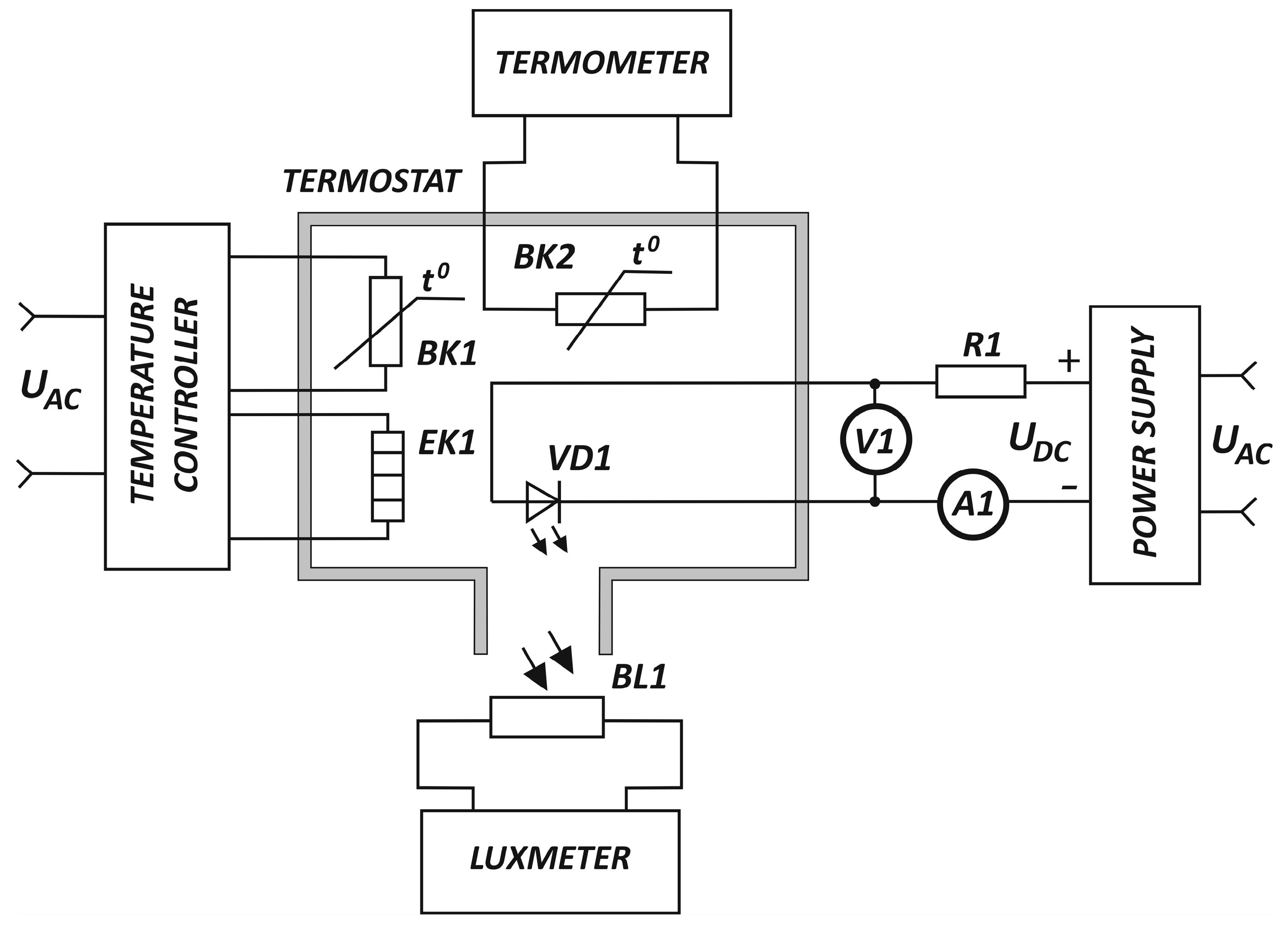

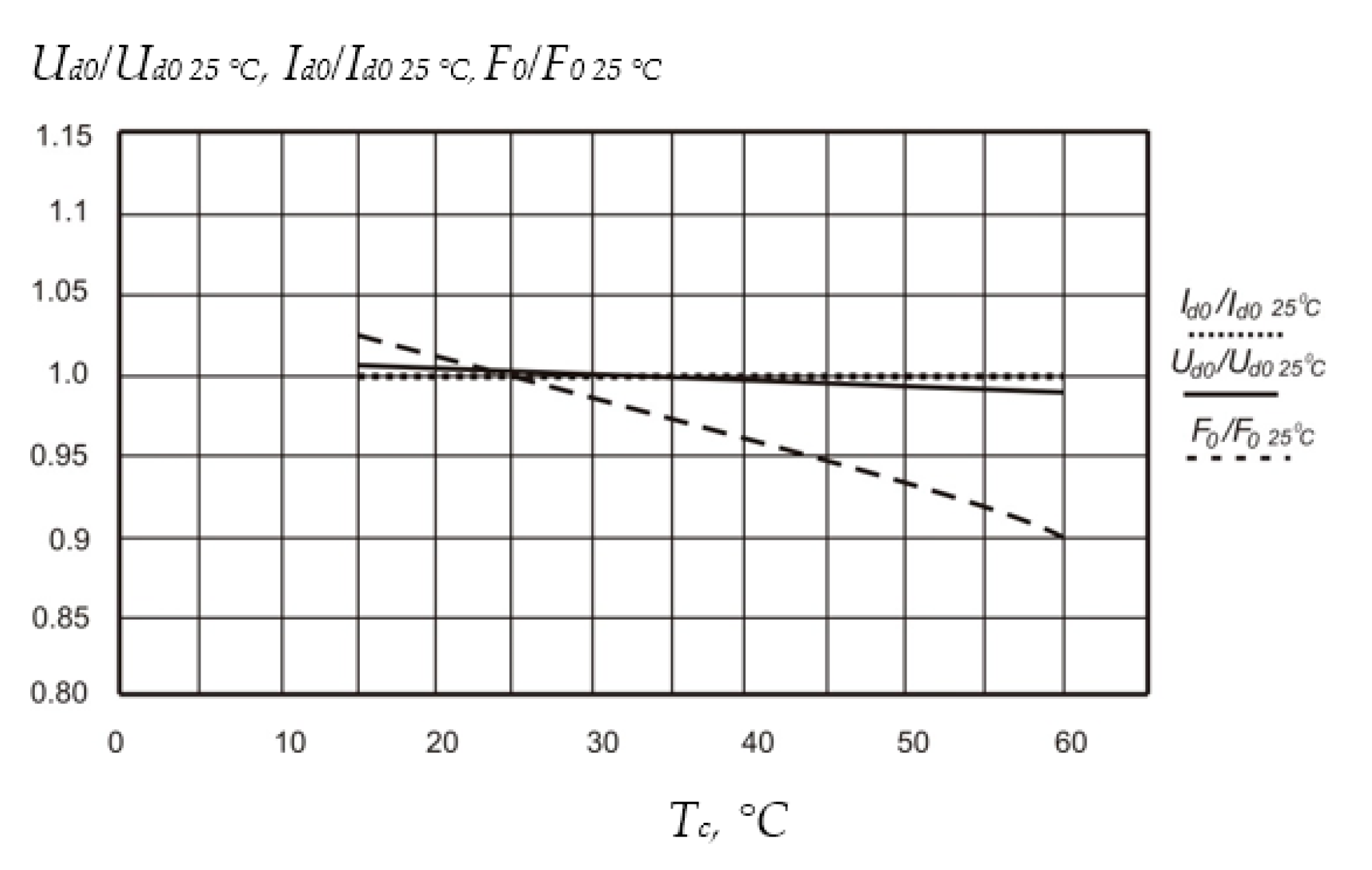

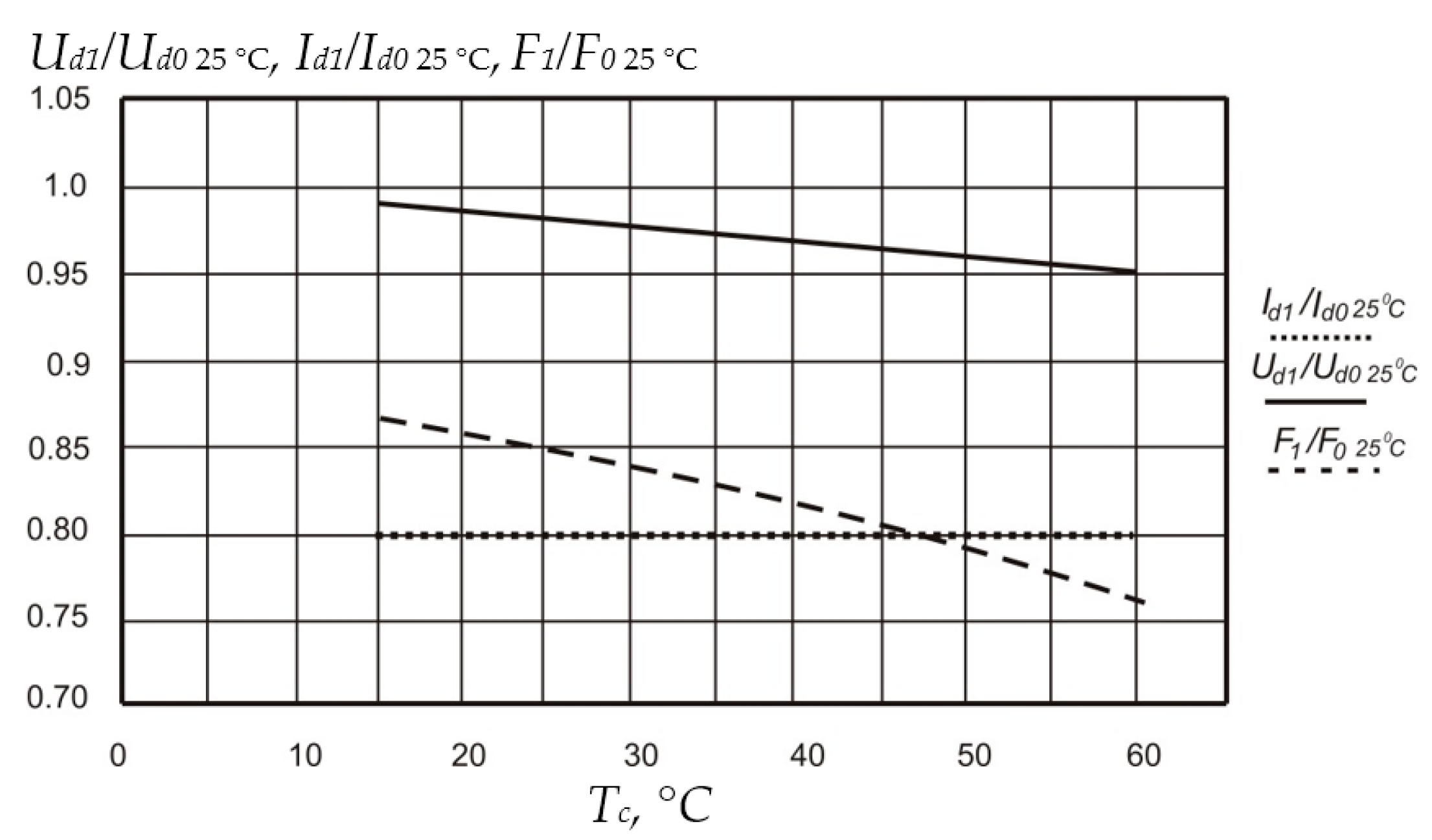

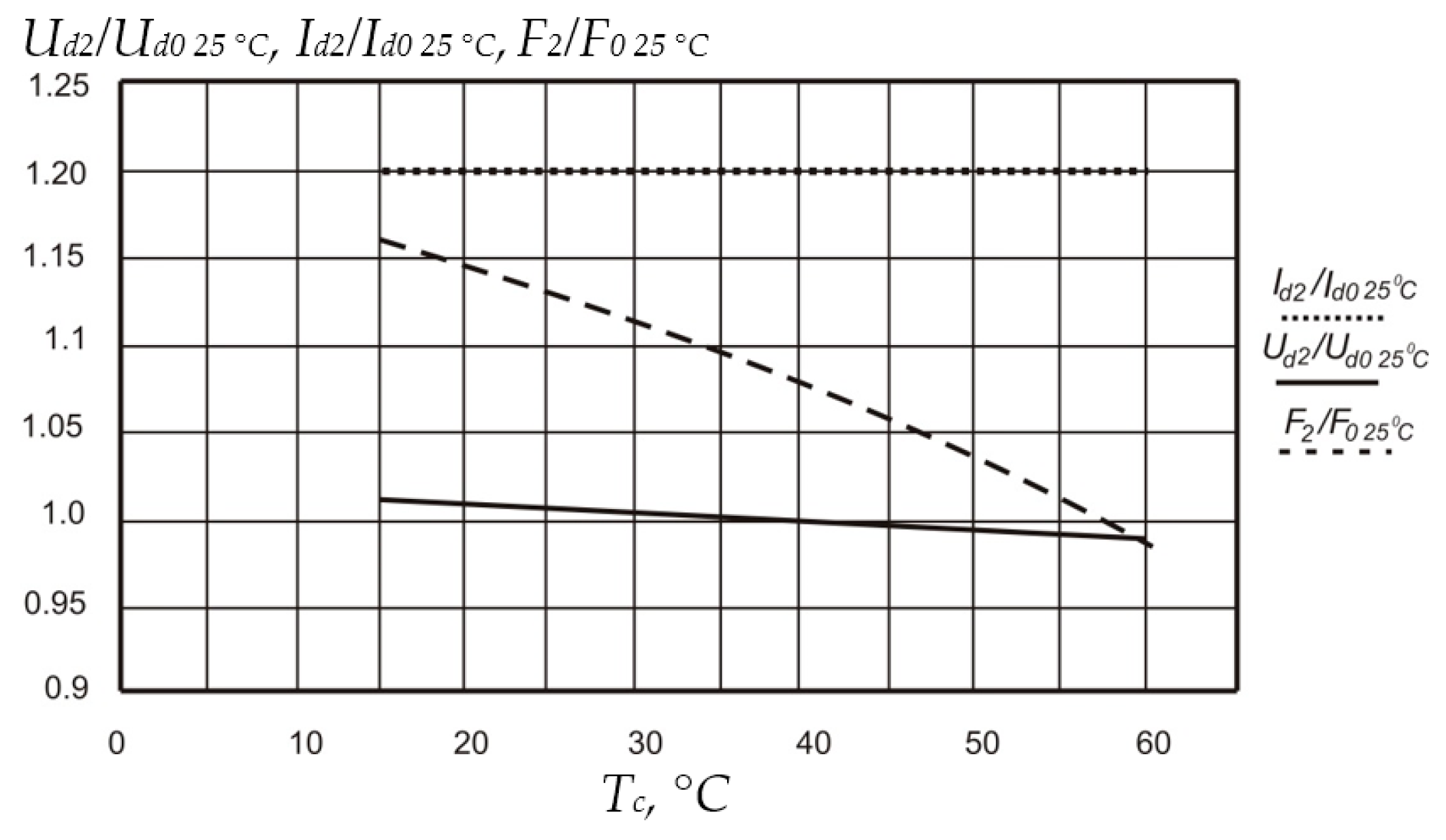
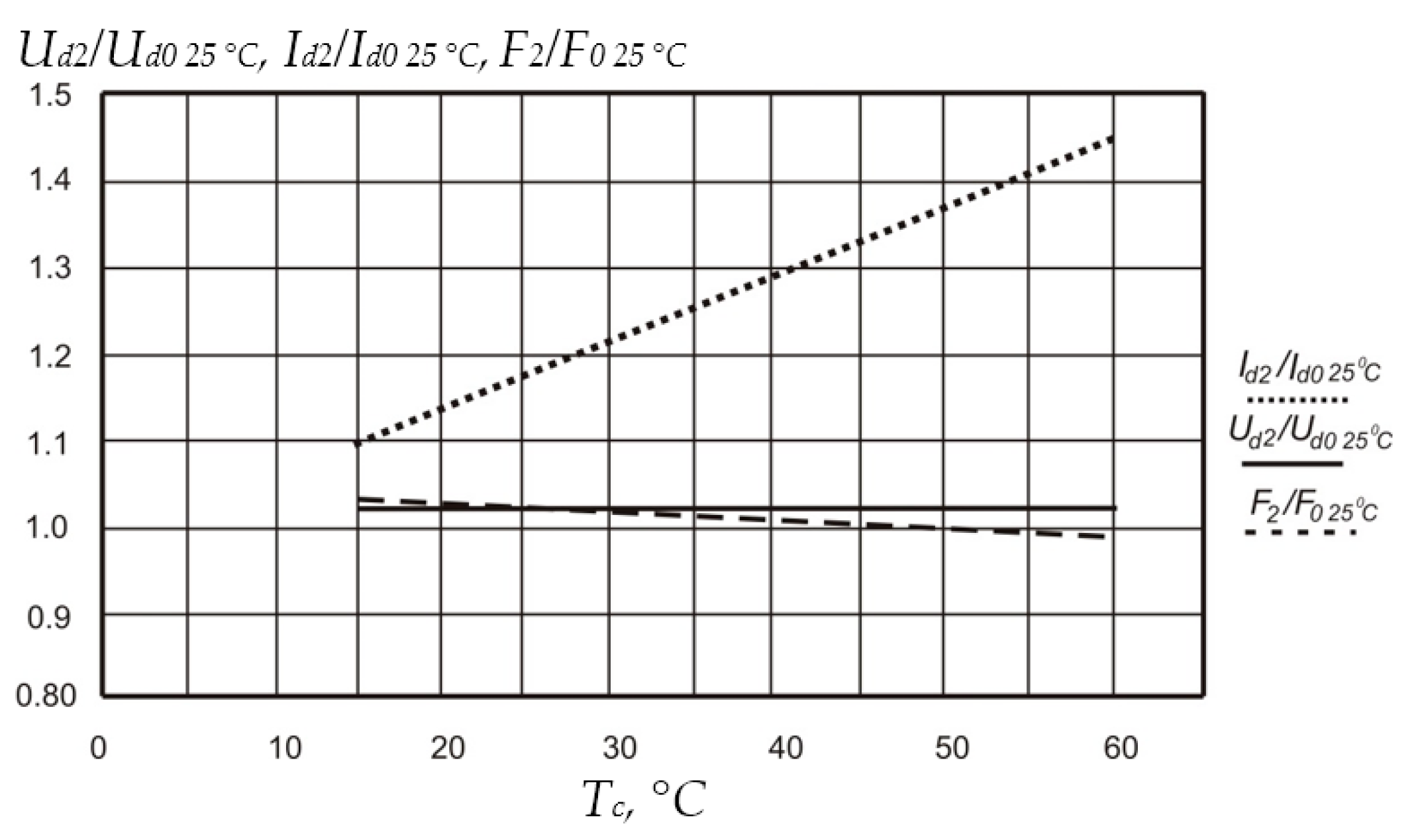
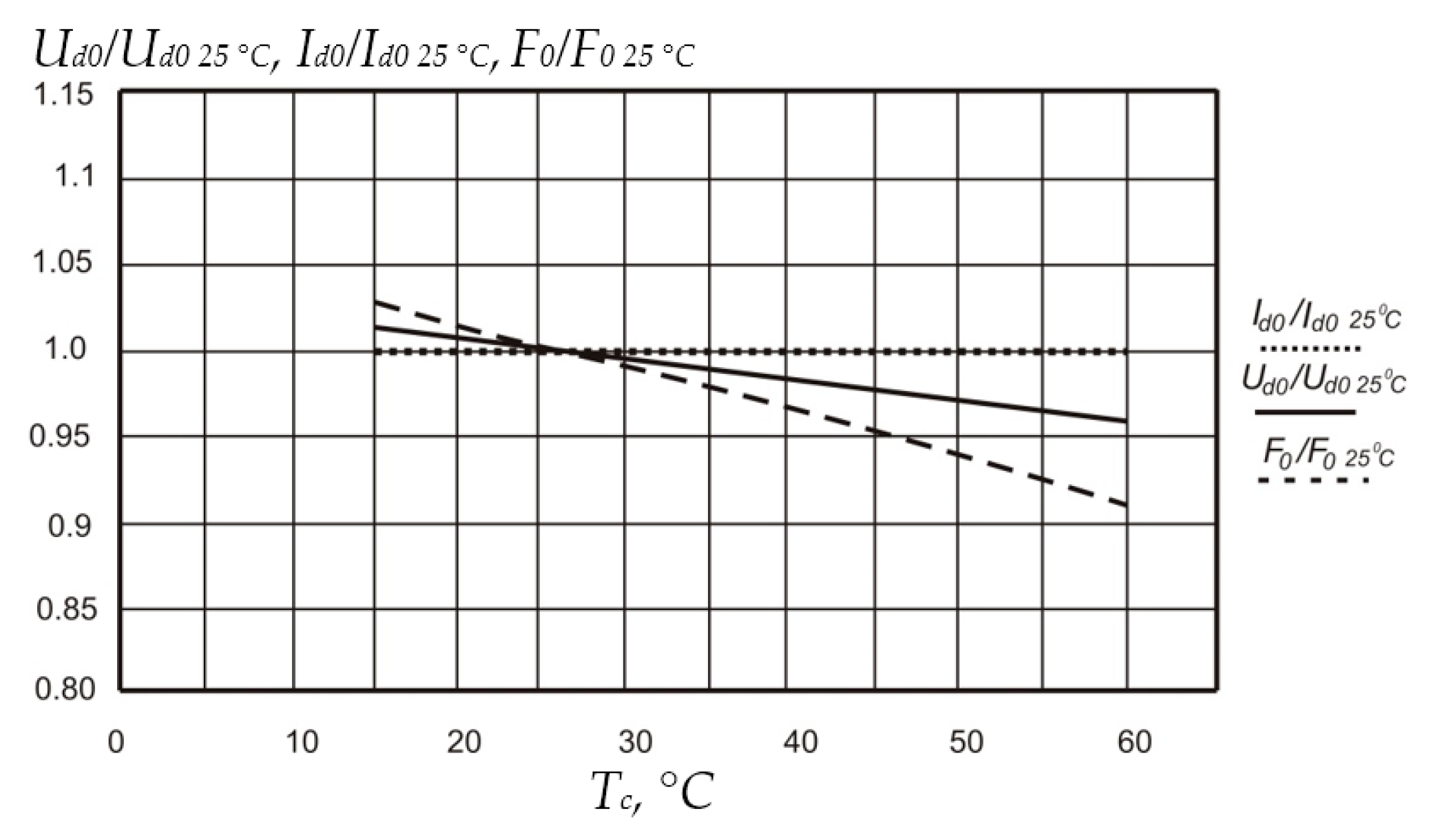
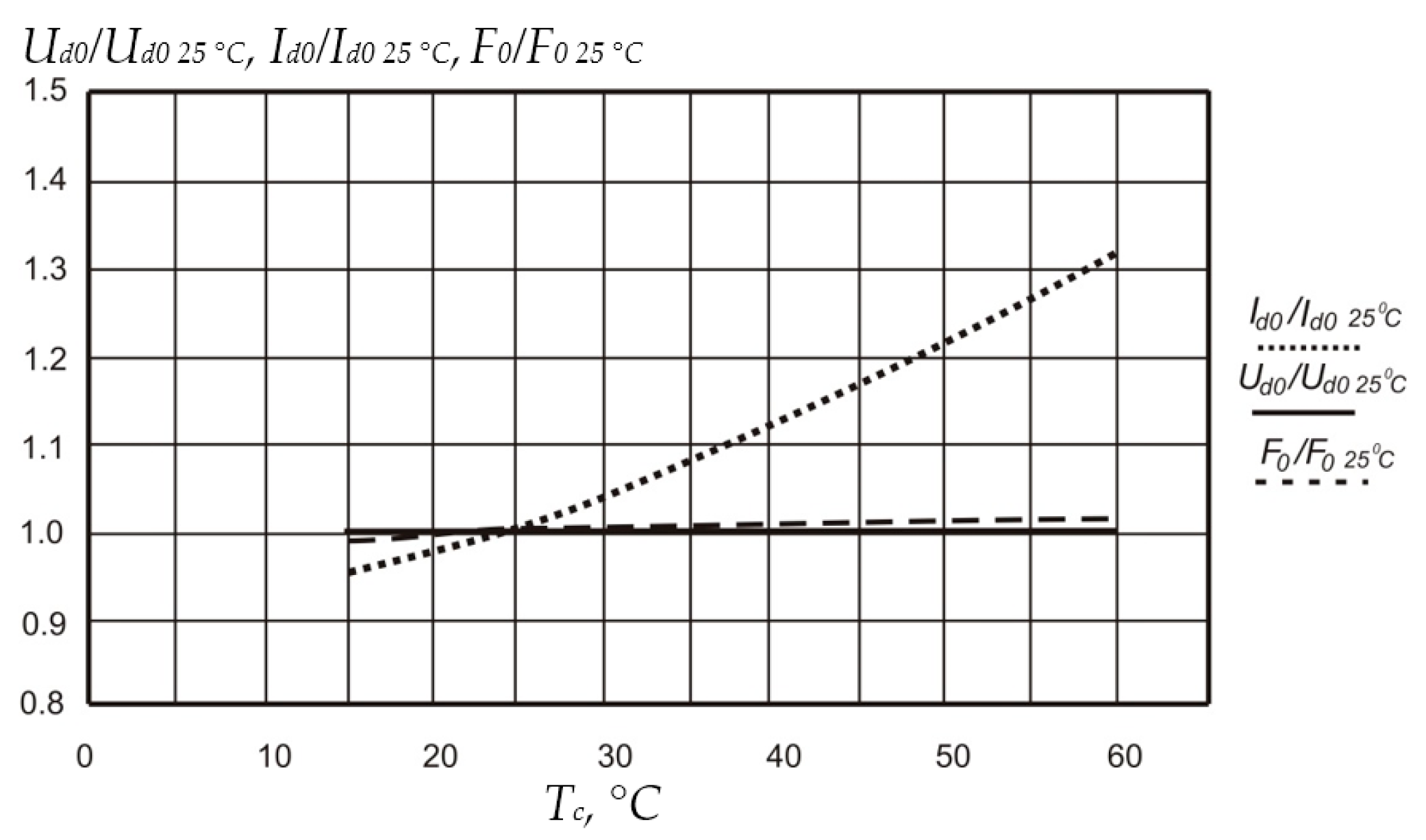
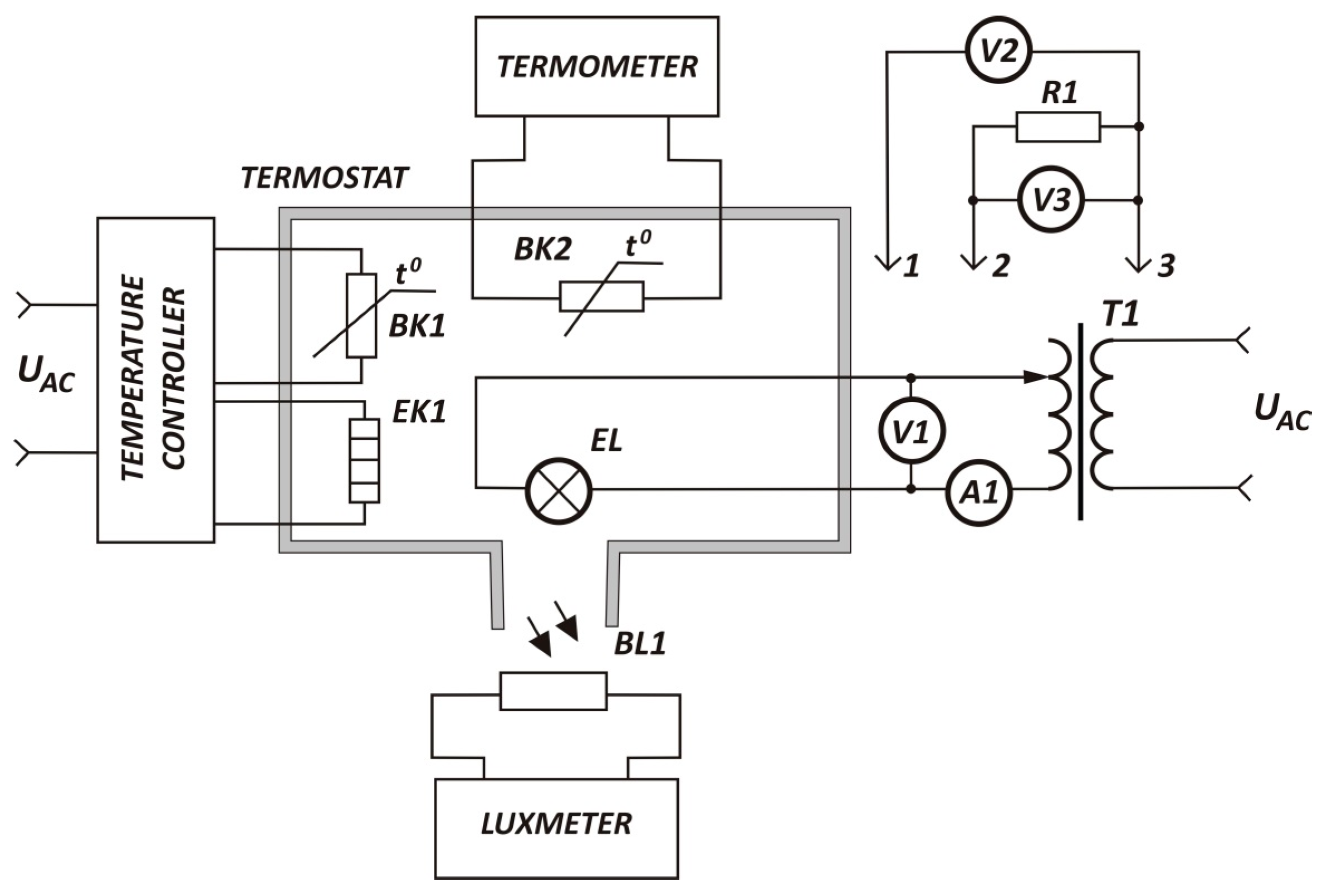
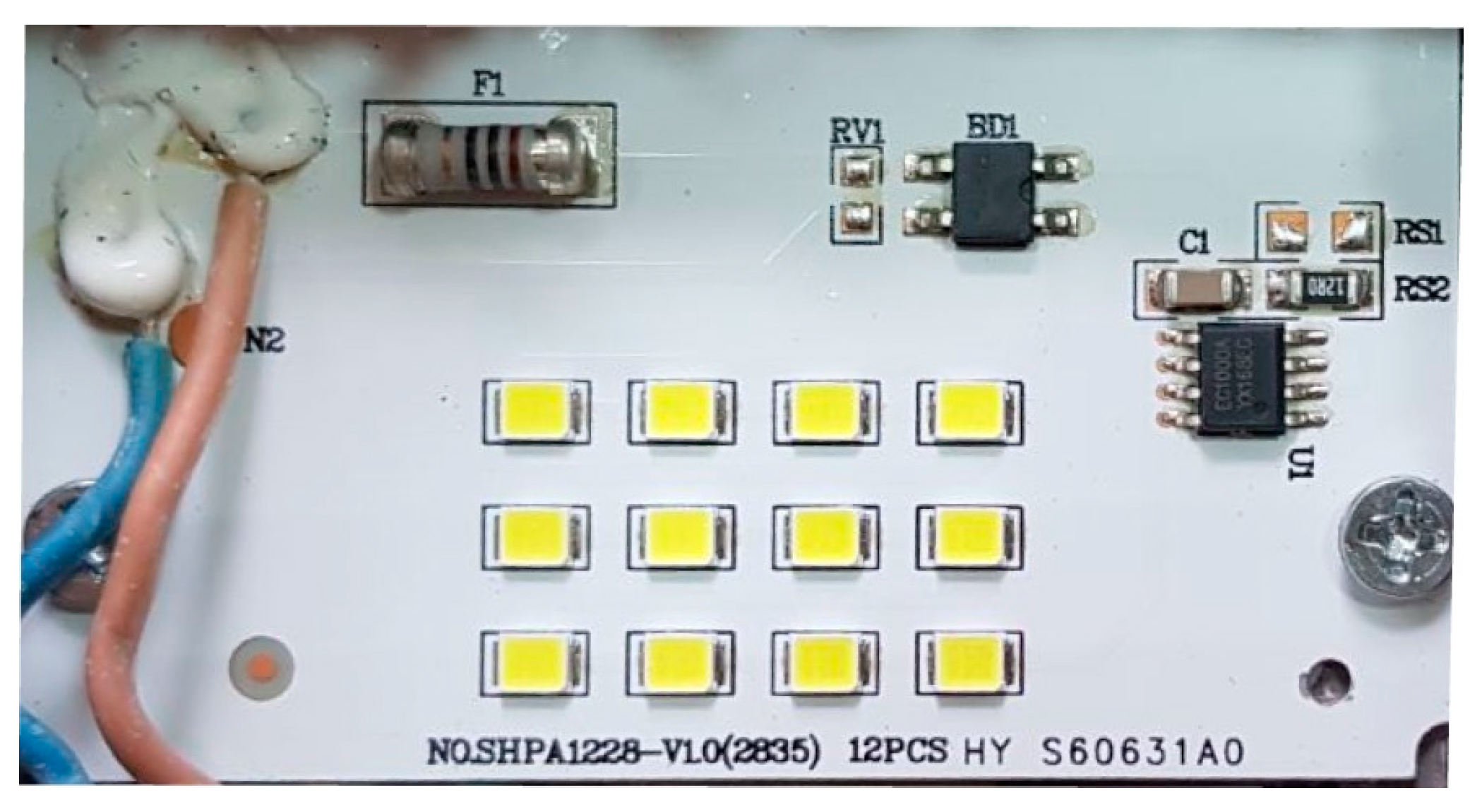

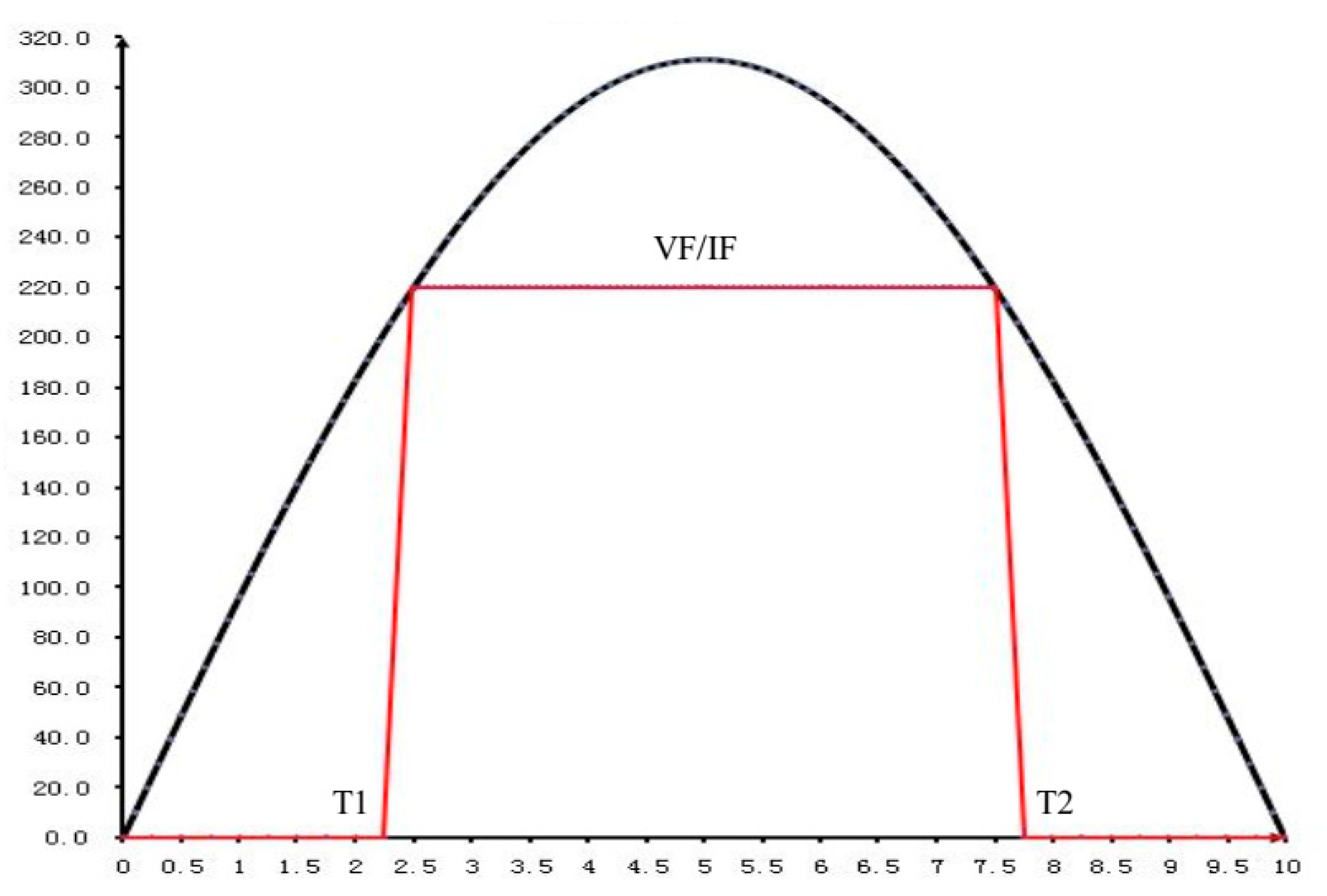

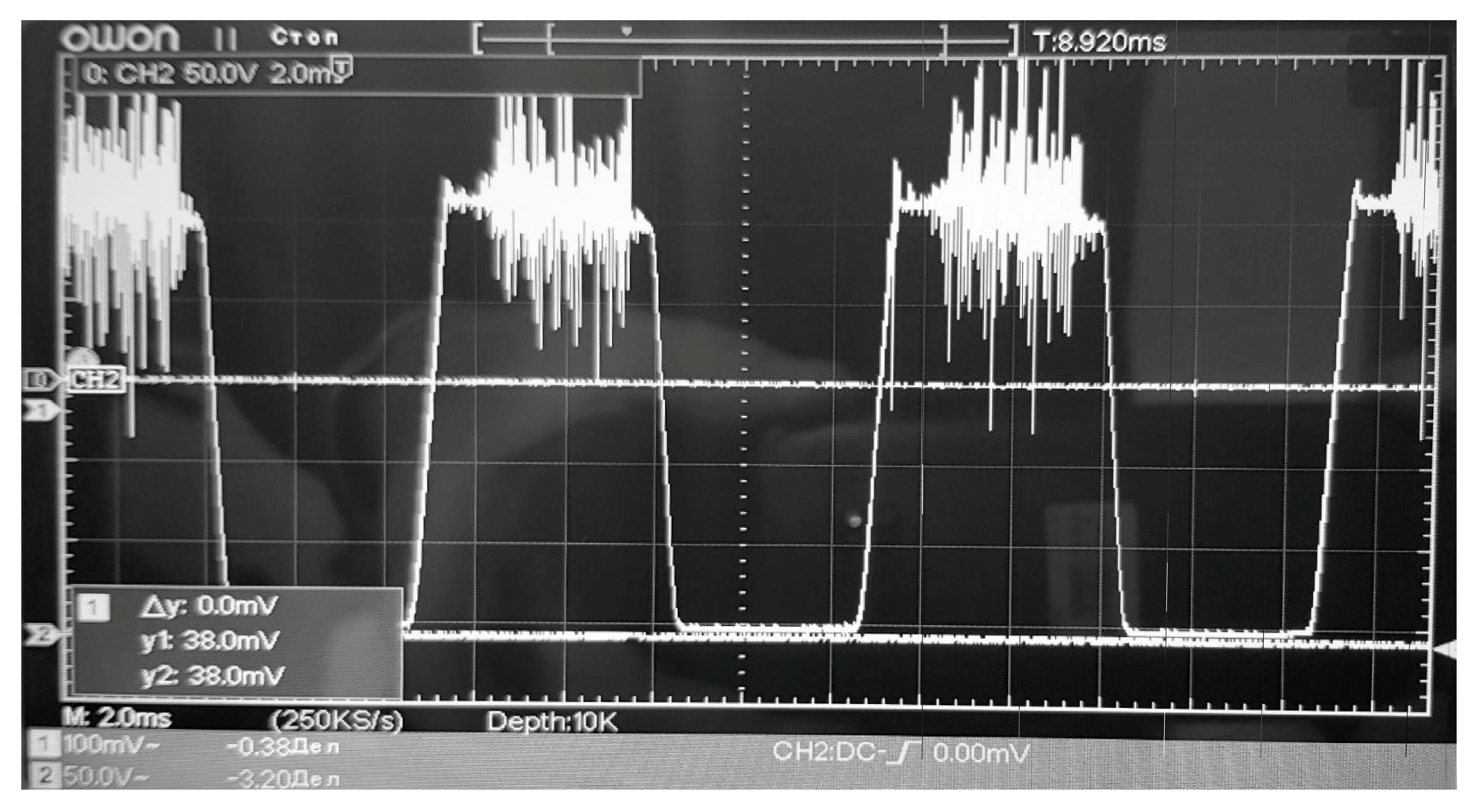
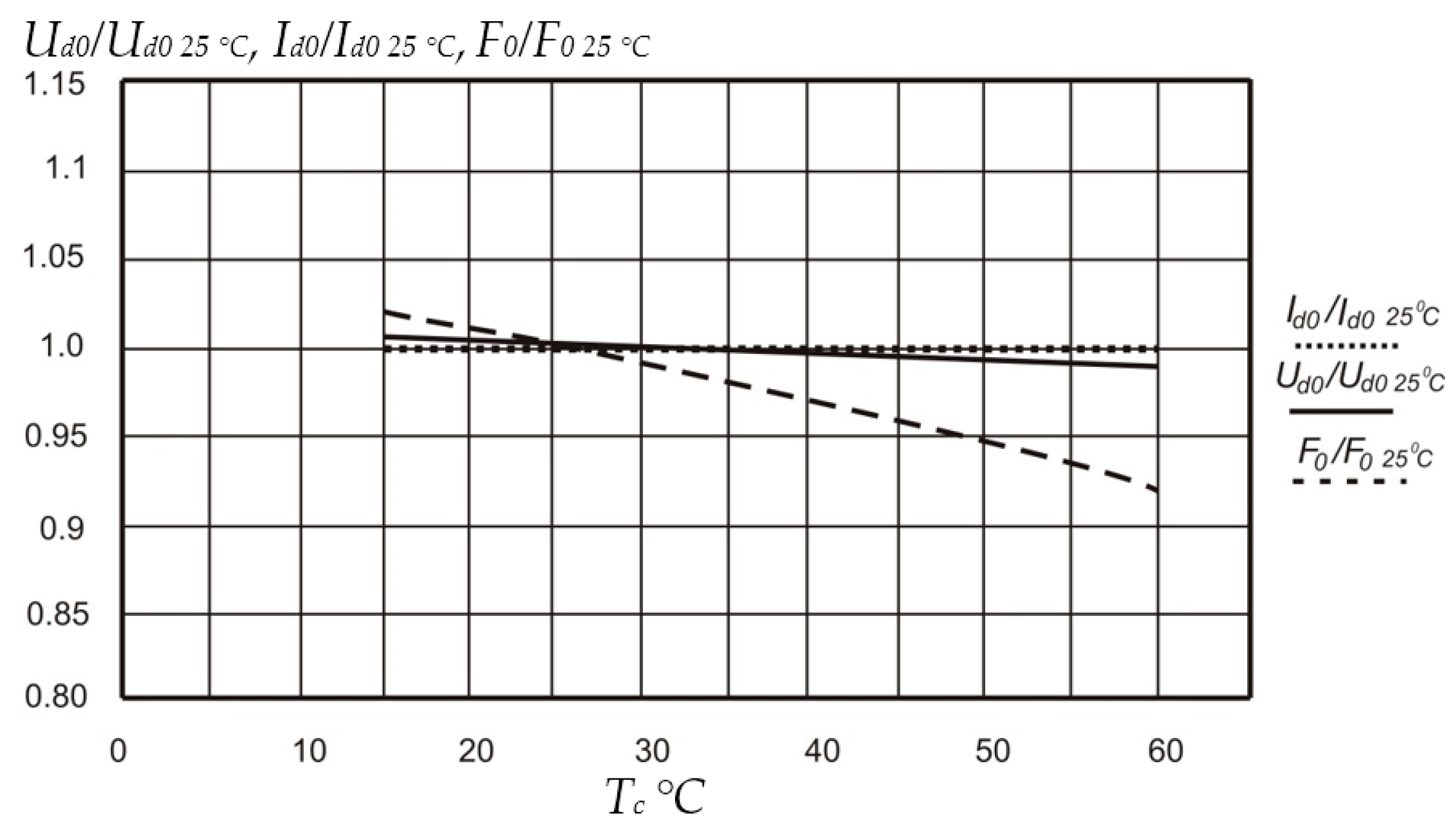
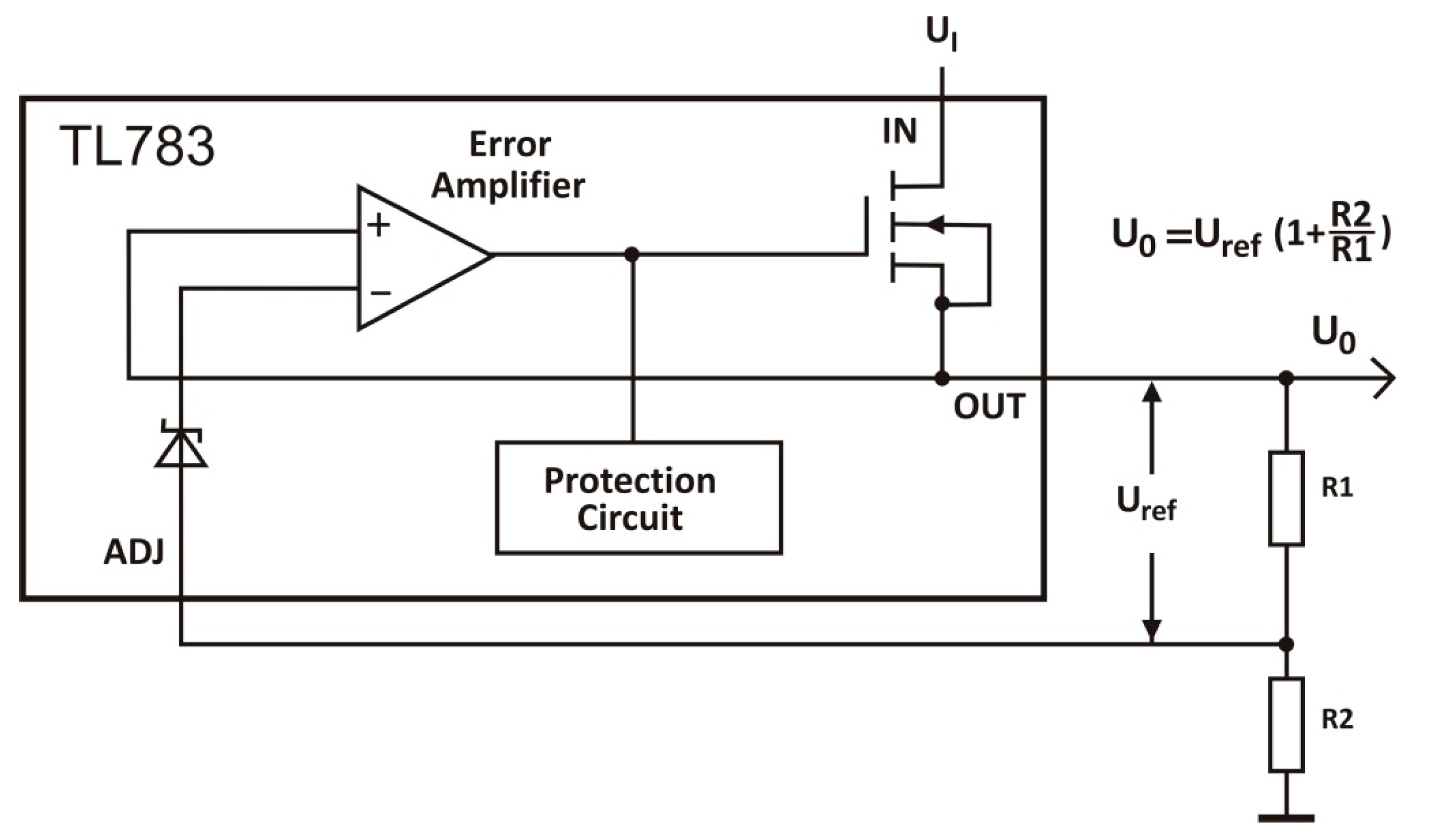
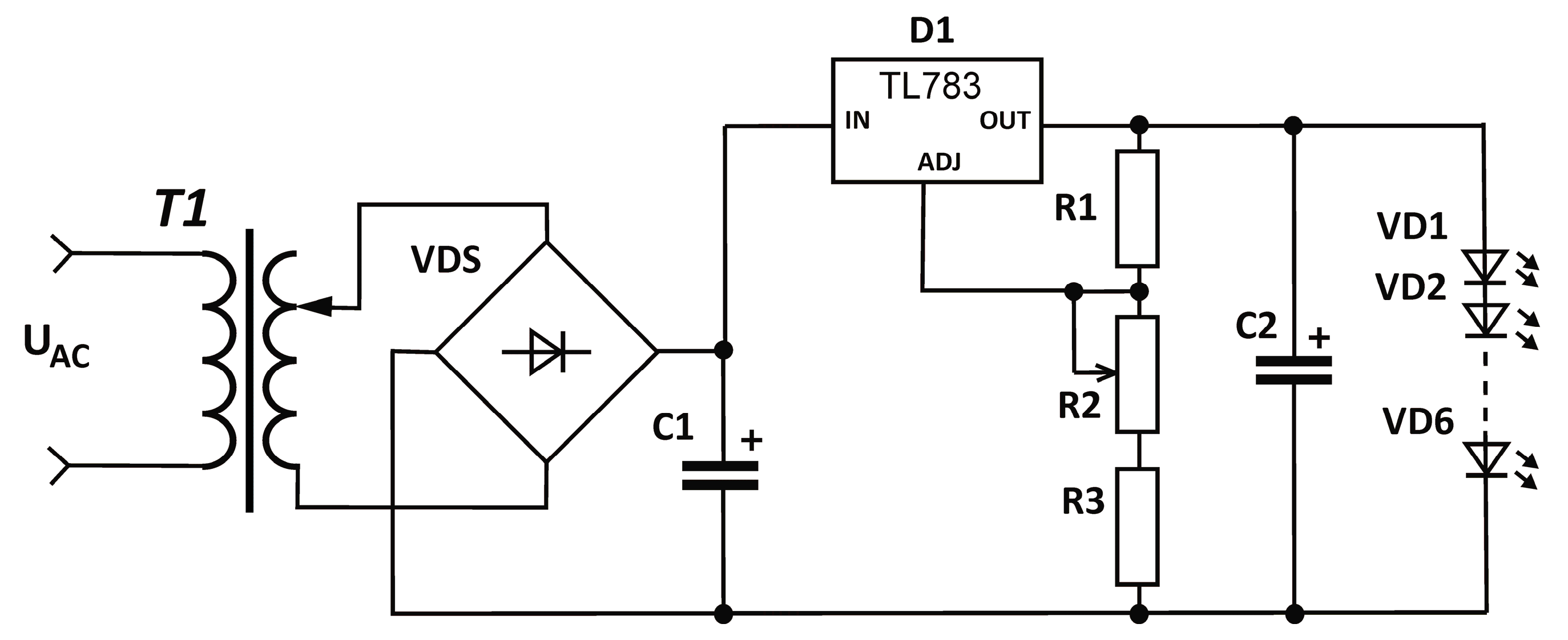
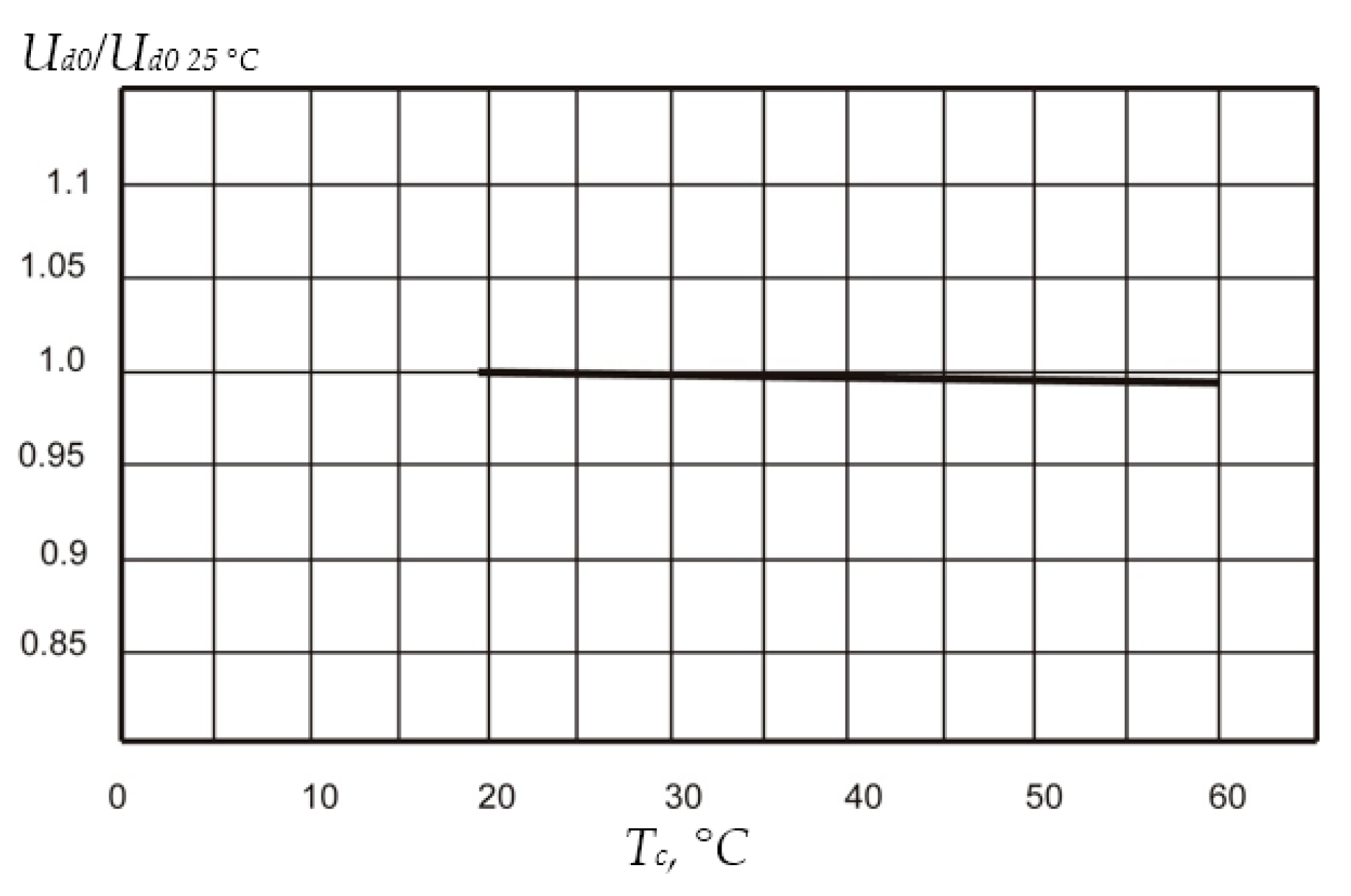
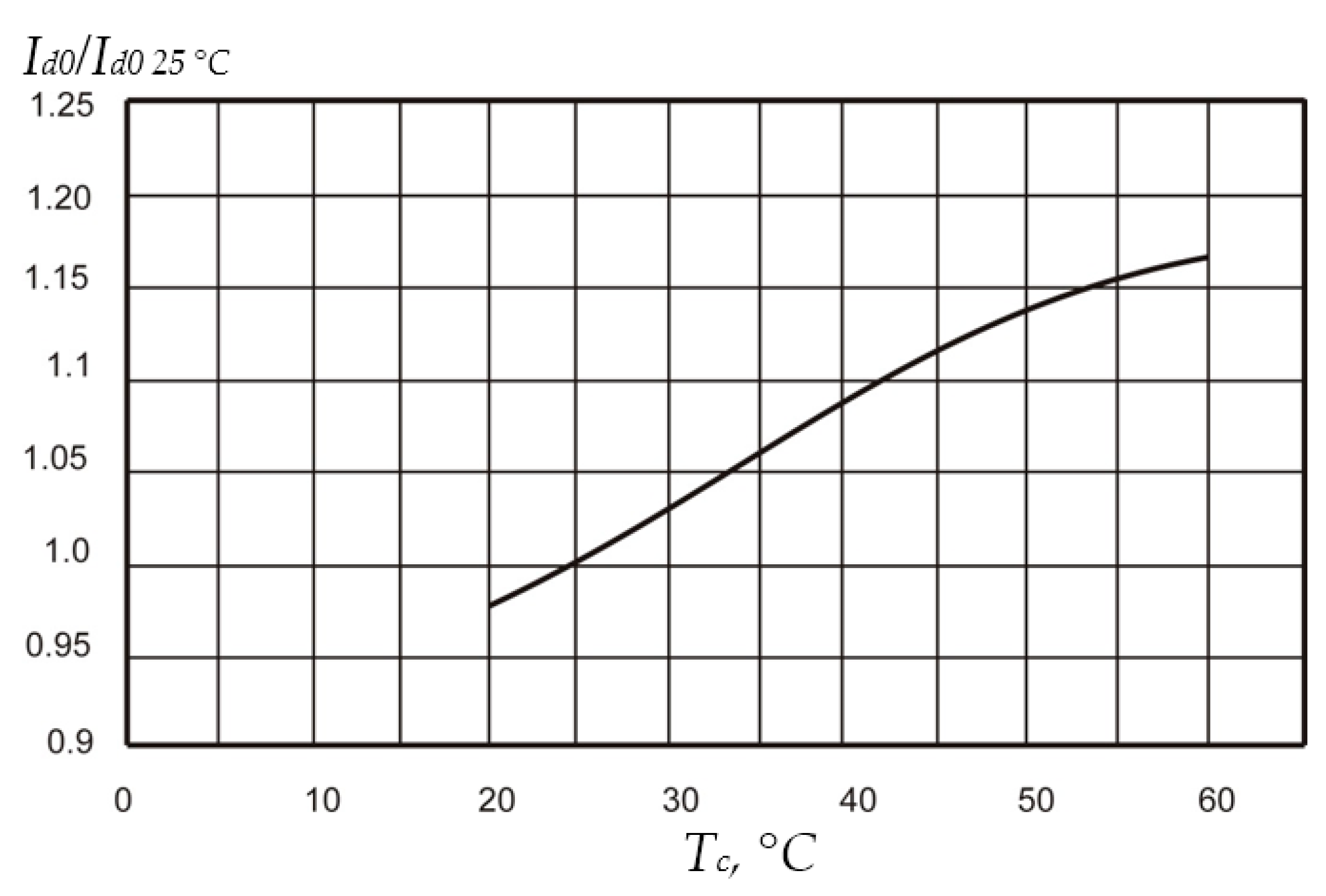

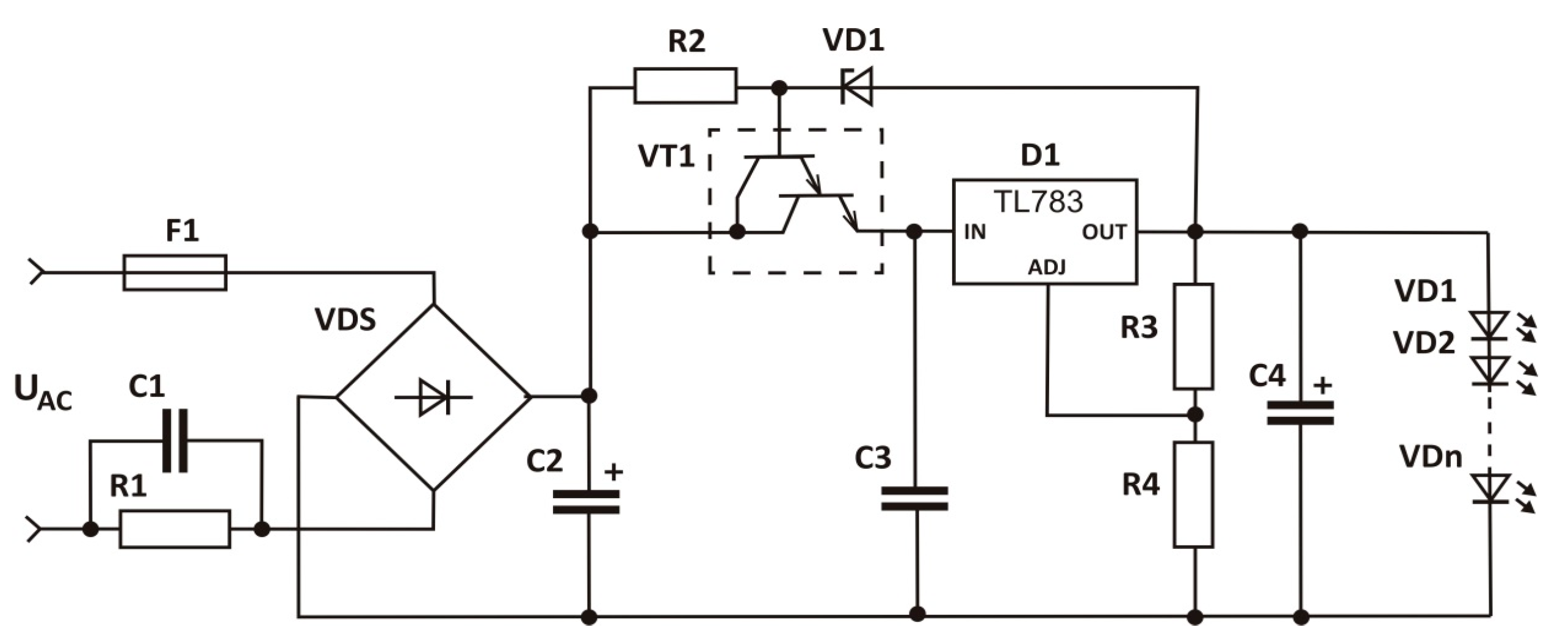


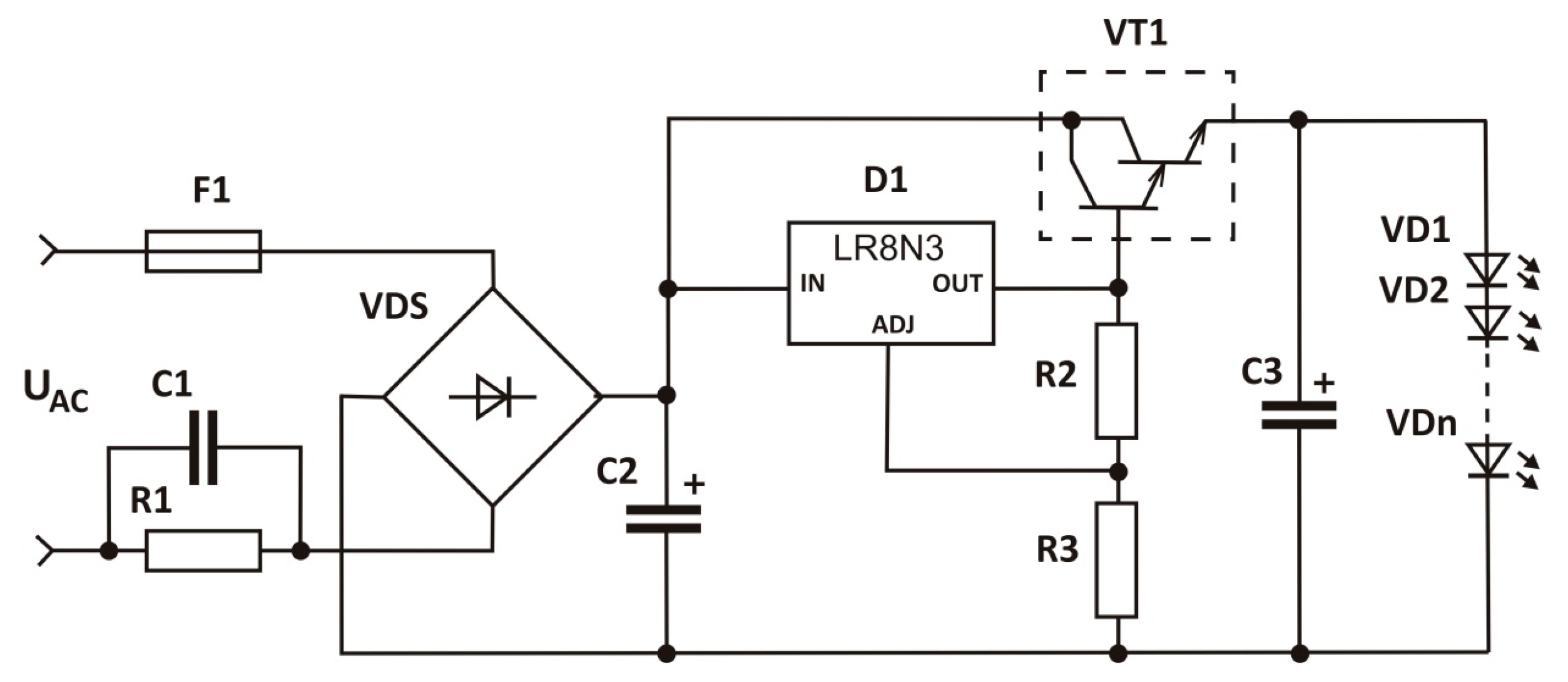
Disclaimer/Publisher’s Note: The statements, opinions and data contained in all publications are solely those of the individual author(s) and contributor(s) and not of MDPI and/or the editor(s). MDPI and/or the editor(s) disclaim responsibility for any injury to people or property resulting from any ideas, methods, instructions or products referred to in the content. |
© 2023 by the authors. Licensee MDPI, Basel, Switzerland. This article is an open access article distributed under the terms and conditions of the Creative Commons Attribution (CC BY) license (https://creativecommons.org/licenses/by/4.0/).
Share and Cite
Beliakova, I.; Piscio, V.; Maruschak, P.; Shovkun, O.; Medvid, V.; Mykhailyshyn, R. Research Control Devices for LED Light Sources under Their Operating Conditions at Elevated Temperatures. Appl. Sci. 2023, 13, 7247. https://doi.org/10.3390/app13127247
Beliakova I, Piscio V, Maruschak P, Shovkun O, Medvid V, Mykhailyshyn R. Research Control Devices for LED Light Sources under Their Operating Conditions at Elevated Temperatures. Applied Sciences. 2023; 13(12):7247. https://doi.org/10.3390/app13127247
Chicago/Turabian StyleBeliakova, Iryna, Vadim Piscio, Pavlo Maruschak, Oleksandr Shovkun, Volodymyr Medvid, and Roman Mykhailyshyn. 2023. "Research Control Devices for LED Light Sources under Their Operating Conditions at Elevated Temperatures" Applied Sciences 13, no. 12: 7247. https://doi.org/10.3390/app13127247
APA StyleBeliakova, I., Piscio, V., Maruschak, P., Shovkun, O., Medvid, V., & Mykhailyshyn, R. (2023). Research Control Devices for LED Light Sources under Their Operating Conditions at Elevated Temperatures. Applied Sciences, 13(12), 7247. https://doi.org/10.3390/app13127247






